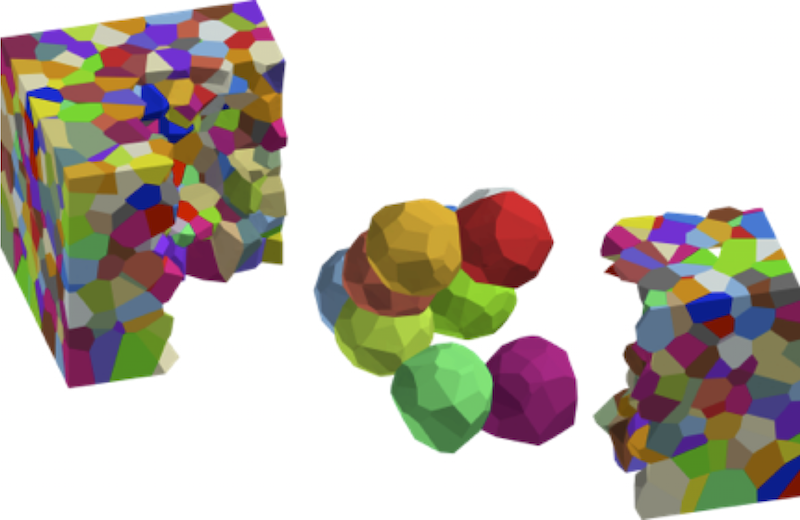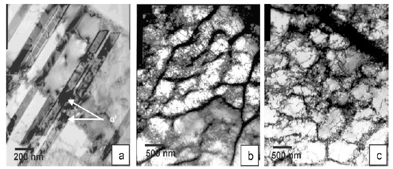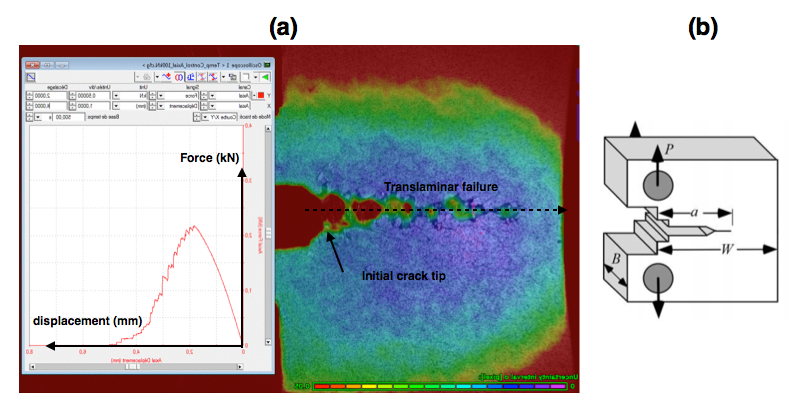Team leader : Benoit Vieille (PR)
Team members : Mouldi Ben Azzouna (MCF), Clément Keller (MCF HDR), Lakhdar Taleb (PR), Fabrice Barbe (MCF HDR), Romain Fleury (Technicien), Elisabeth Lesage (Assistante Administrative)
Post-doc : Josiane Nguejio, Elie Paccou
PhD students : Oscar Octavio Vallejo Montero, Mathieu Calvat, Clément Victor (CIFRE Safran), David Philippe, Claude Lajoie Ifounga (CIFRE Analyses&Surfaces), Shubham Joshi, Yan Duval, Jose Jimenez Reyes
The aim of projects at ERMECA is to create links between structures of metals, polymers, composite materials and mechanical properties in service, especially at the macroscopic level. Projects are focused on the understanding of the physical mechanisms and are based on multi-scale and multi-physical approaches. The detailed understanding of microstructure-property relationships is supported by both experimental analyses and modelling. The aim is to establish the laws of behavior intended for structural design and materials engineering, in particular through architecture. The focus is mainly on structural materials, under complex thermomechanical conditions representative of their actual use, up to conditions of extreme thermal exposure.
Our main area of expertise is: cyclic elasto-visco-plasticity of materials, study of damages and behavior in severe environments, metallic alloys and thermoplastic matrix composite materials (TP).
Research activities cover six topics:
- Cyclic thermomechanical behavior and fatigue of metallic alloys and composite materials
- Nanostructuring and metal architecture
- Fire and high temperature behaviour of TP matrix composites
- Failure and damage tolerance of TP composite materials
- Interaction between mechanics, metallurgy and phase transformations in steels
- Additive manufacturing
Beyond microstructure characterization facilities of GPM, these projects are carried out thanks to some specific mechanical tests facilities: a thermomechanical analysis platform including different thermomechanical test machines (cyclic tensile-compression, tensile-torsion, controlled heating + cooling system, thermal enclosure, tube furnace, calorimeter cone, Charpy sheep), different measurement means (classical extensometry in all stress ranges, video acquisition chain, digital image correlation, acoustic emission, ultrasound), different heat treatment furnaces and a complete 3D MO analysis device. Also some specific data storage + processing and numerical calculation facilities are used (CIN, microstructure descriptor, CAD, finite element calculation).
Collaborations (academic):
- ENSICAEN, CRISMAT, CNRS UMR 6508
- Ecole des Mines de Paris, Centre des Matériaux, CNRS UMR 7633
- Ecole des Mines de Saint Etienne, SMS Centre, Georges Friedel laboratory, CNRS UMR 5307
- ISAE-SUPAERO, ICA, CNRS UMR 5312
- CEA Saclay
- Rouen-INSA Rouen, CORIA UMR CNRS
- University of Paris 12, ICMPE, CNRS UMR 7182
- Sorbonne University, IJLRA
- University of Liège (Belgium), Argenco department
- École Polytechnique de Montréal (Canada), Multiscale Mechanics Laboratory
- University of Sfax, (Tunisia), LA2MP
- Ecole Militaire Polytechnique, Algiers, Algeria
- North Carolina State University
Project management since 2014:
- CNRS INSIS PSEEPS: Bimodal polycrystals 2014
- Labex EMC3 : CMAIN 2015
- ESP carabiner: DECOLLE (201415)
- CPER labo (region+Europe): PFAN (20182020), AEROFLAMME (2019-2021)
- CPER establishment (region+Europe): CIEMME (20152018)
- Collaborative project region-industry: CLIP (2018-2020)
Industrial relations (partnerships, contracts, collaborative projects):
EDF, FAVI S.A., Renault, Technip, ZODIAC, ArianeGroup, Volum-e, CEA
Responsibility in training:
The team leads the "Mechanics - Materials" course in the Haut Normand master's degree in "Design Engineering" and teaches Mechanics of Materials in the Mechanics department of the INSA in Rouen.








